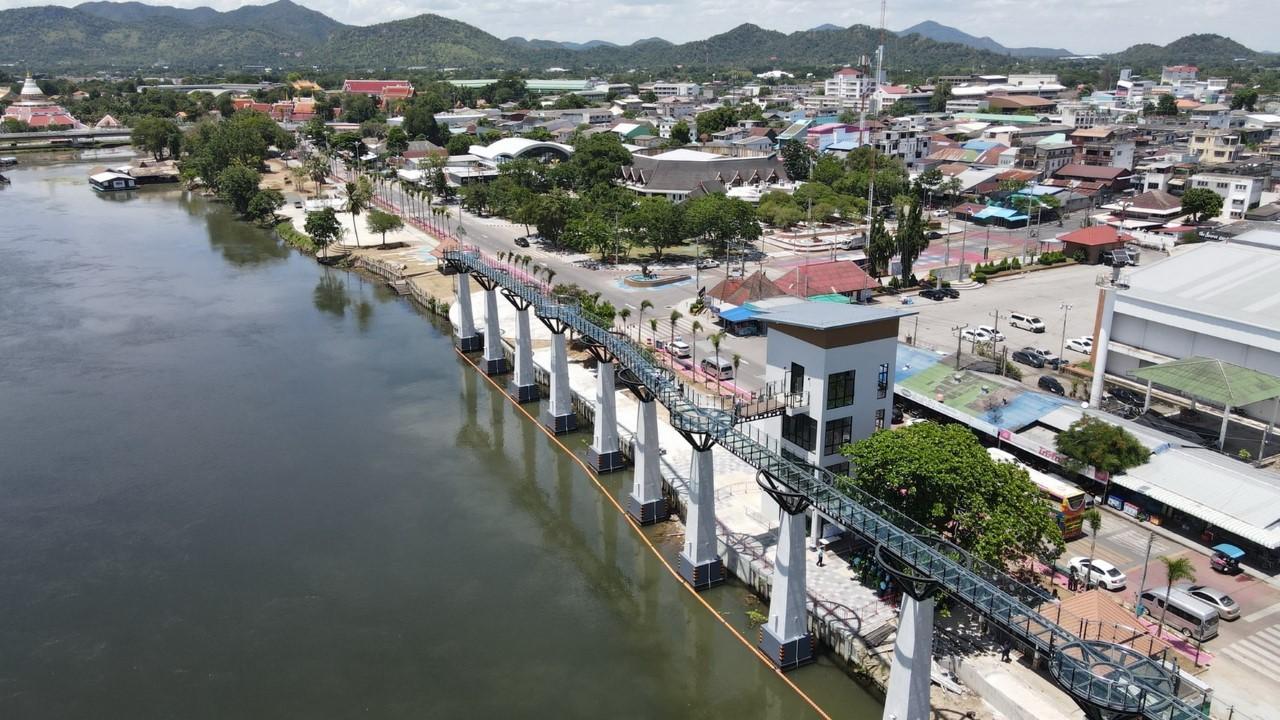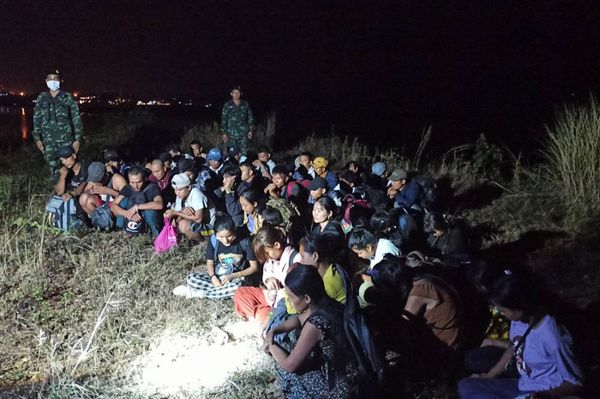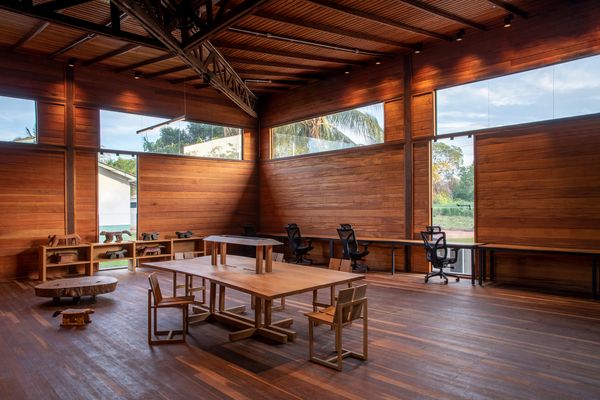
'If you build it, they will come." That's often the thinking behind big projects like amusement parks, shopping malls, tourism venues and sports arenas. Sometimes a new facility attracts many visitors, investors make a profit, or a government agency delivers substantial benefits to the public. Sometimes not.
When it comes to our old landscapes, villages and vintage towns, however, the "build, build, build" philosophy is not the right way to go. Instead, success means preserving what's already there.
You want to limit or reverse development to fit into a place harmoniously. You should avoid disrupting the location's visual integrity, historic character and local way of life. Unfortunately, we lack up-to-date, holistic national policies, funding and processes to ensure this happens in Thailand.
A newly built tourist attraction in Kanchanaburi illustrates the difference between developing new projects and conserving existing cultural and natural resources.
Last year, officials opened the so-called Skywalk, a 12-metre high, 150-metre-long steel and glass pedestrian footbridge constructed along the riverfront within the official Old Town Zone.
The town has vintage wooden and brick houses, shophouses, and other sites. It is rich in stories and local memories of the 19th and 20th centuries, especially the difficult times of World War II. There is much to learn from Kanchanaburi's history, archaeology, architecture, culture, way of life and natural surroundings.
As for the Skywalk, the intention might be good -- to "develop" the town through tourism. But some observers have questioned whether this modern structure suits that purpose. Does a towering structure of steel and concrete and glass harmonize with the riverside and low-rise townscape? Does it block the view of the mountains? On hot, sunny days, will visitors want to go up there without any shade? When it rains, will the glass floor become slippery? Will residents themselves use the Skywalk?
Instead of spending public funds on building and maintaining a single, costly piece of tourism infrastructure, could the money have been invested in joining with the local people to study and preserve the local stories and the few remaining old buildings that are at risk of disappearing?
These are valid questions, but the Skywalk is already done and built. Some people probably like it, and some might come to see it. Now the best thing is to make the most of it. How? If Kanchanaburi conserves its heritage assets, then people who visit the Skywalk will also have other things to see. It will further help preserve the quality of life for the townspeople, who are the main stakeholders.
For now, however, there is no master plan, action plan or budget for preserving and developing Kanchanaburi's old city. The key is to inventory the town's buildings and sites, document the history and stories of the people there, and then formulate plans to take care of it all, with appropriate funding, tax incentives, regulations, professional guidance and involvement of the public, especially local people. A budget should cover not just government sites but privately owned heritage properties. This should happen in every town, after all.
Existing policies, however, would define and protect heritage in a very limited way, even under last year's preliminary proposal for 12 old cities last year, which has yet to be funded. Under this national system, Kanchanaburi's conservation would not incorporate nearby World War II-era sites, even though they are linked to the old town's history.
So, what should conservationists and planners want to protect in Kanchanaburi? What is historic and interesting about this town? Much concerns its strategic geographic position at the confluence of two big rivers on the fringe of farmland and forested mountains.
Established under King Rama I in the early 19th century, it served as a stronghold to defend against incursions from Burma. In 1835, King Rama III ordered the construction of moats, brick walls, gates and fortifications. In that era, many Vietnamese were brought and settled there. During and after the reigns of King Rama IV and V, Kanchanaburi became a frontier outpost for transporting and trading farm goods, bamboo and logs via the river.
During World War II, the town was a node for the 415-kilometre railway built by the Japanese military to transport troops and munitions into Burma. In 1945, the Allied forces bombed the railway's nearby Bridge Over the River Kwai, a site made famous by the book and Hollywood movie of the same name.
Tens of thousands of tourists from all over the world visit the River Kwai Bridge every year, often stopping in town to see the cemetery where Allied prisoners of war were buried. A small museum documents the horrors of this period, when thousands of Allied POWs died while forced to build the railway -- as did tens of thousands of conscripts from Burma, Malaysia and Indonesia. Tourists also visit the memorial park and museum 80 kilometres away at Hellfire Pass, where POWs had to toil at cutting a passage through the rocky side of a mountain.
These are memorials of dark and difficult times, but the old town also has other interesting places and stories. Parts of the ancient walls have been reconstructed by the Fine Arts Department and are recognised as a national monument. There are very old communities at Pak Phraek Road and Chukdon Market. The town had a transport network that used canals and river channels to ship agricultural products, float logs to sawmills, and transport bamboo to paper factories. A handsome post-war factory building, built for a paper manufacturer, stands empty and could be converted into a cultural centre.
Before World War II, a Japanese spy named Mr Inoma opened a shop in town selling cloth and crockery. The Boonpong and Brothers shop owner became a hero by smuggling goods to Allied prisoners in the POW camp, saving many lives.
The old town's natural features are important in the city's story and contribute to its beauty: the Kwae Yai River, Kwae Noi River, and Mae Klong River, along with areas along the west bank.
It's especially important to ensure that the plan includes the Bridge on the River Kwai and the wartime labour camp site, which are part of the area's World War II history. Unfortunately, these sites are not covered under the existing 2017 proposal under Onep, the Office of Natural Resources and Environmental Policy and Planning.
We should develop a new, strong master plan to ensure that practical conservation and development guidelines are implemented. This would get some extra value from the Skywalk because its architecture was designed in style, imitating the historic River Kwai Bridge. So it would serve as a kind of new memorial in the old town, reminding us of the authentic bridge and the events of World War II. Memories of this period are important to local people and others worldwide, so let's make sure the plan covers this history.
With a good plan, the authentic Bridge on the River Kwai and the old city of Kanchanaburi could be proposed for listing as a Unesco World Heritage Site. If we put conservation first in Kanchanaburi and all our other old towns, we and our grandchildren and their grandchildren will benefit.
Weeraphan Shinawatra is a doctor of Architecture and an expert in conservation management. Heritage Matters is a monthly column presented by The Siam Society Under Royal Patronage to advocate sustaining the architectural, cultural and natural heritage of Thailand and the neighbouring region. Each column is written by a different contributor. The views expressed are those of the author.










